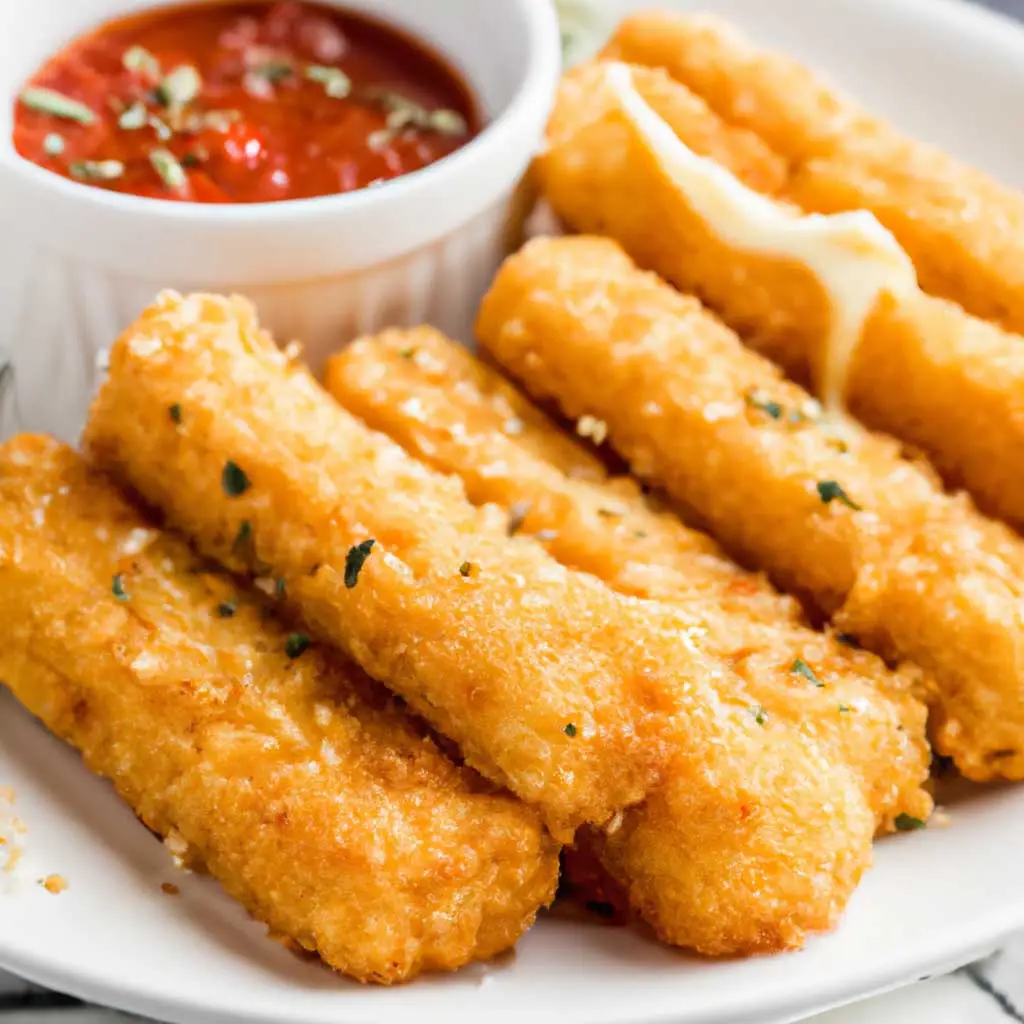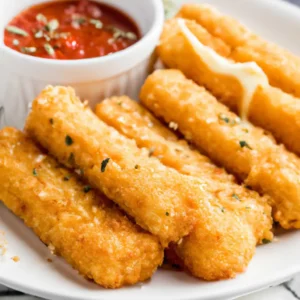
Mozzarella sticks, those crispy, gooey delights, have long been a beloved appetizer or snack for many. Originating from Italy, where mozzarella cheese reigns supreme, these sticks have made their way into the hearts and stomachs of people worldwide.
Despite their seemingly complex appearance, making homemade mozzarella sticks is surprisingly straightforward, making it an excellent choice for home cooks looking to impress without too much hassle.
With just a few simple ingredients and some basic kitchen skills, you can recreate the magic of restaurant-style mozzarella sticks right in your own kitchen.
The process involves coating sticks of mozzarella cheese in a seasoned breadcrumb mixture before frying them to golden perfection. The result? Crispy on the outside, warm and gooey on the inside—a true delight for the senses.
While mozzarella sticks are often enjoyed as an appetizer, they can also make for a fun and satisfying snack any time of day. Whether you’re hosting a gathering with friends or simply craving a comforting treat, these homemade mozzarella sticks are sure to hit the spot.
Expert Tip: For an extra flavor boost, try adding grated Parmesan cheese or a pinch of red pepper flakes to the breadcrumb mixture.
Mozzarella Cheese Block: Mozzarella cheese provides that signature gooey texture when melted inside the crispy coating.
Plain Flour (All-purpose flour): Coating the cheese sticks in flour helps the egg wash adhere better, ensuring a more even coating of breadcrumbs.
Salt: Adds flavor to the flour coating, enhancing the overall taste of the mozzarella sticks.
Garlic Powder: Infuses the flour coating with a subtle garlic flavor, elevating the taste of the final dish.
Eggs: Used to create a binding layer that helps the breadcrumb coating adhere to the cheese sticks.
Breadcrumbs: These provide the crispy outer layer of the mozzarella sticks, adding texture and flavor.
Italian Seasoning: Adds a blend of herbs and spices to the breadcrumb coating, imparting a classic Italian flavor profile to the dish.
Expert Tip: Handle the mozzarella sticks gently when dredging and coating to prevent them from breaking apart.
Expert Tip: Make sure the oil is hot enough before frying the mozzarella sticks to ensure they cook evenly and develop a crispy exterior.
To prevent the cheese from oozing out, make sure to freeze the mozzarella sticks for at least 2 hours before frying. This helps solidify the cheese, creating a barrier that holds its shape during frying.
While mozzarella is traditionally used for mozzarella sticks, you can experiment with other semi-soft cheeses like cheddar or Monterey Jack for a different flavor profile.
Yes, you can bake the mozzarella sticks in a preheated oven at 400°F (200°C) for 8-10 minutes, or until golden brown and crispy.
Store any leftover mozzarella sticks in an airtight container in the refrigerator for up to 2 days. Reheat them in the oven to maintain their crispiness.
Yes, you can prepare the mozzarella sticks up to the point of coating them in breadcrumbs, then freeze them on a baking sheet until solid. Once frozen, transfer them to a freezer bag or container and fry them straight from the freezer when ready to serve.
Here are some more recipes for you to enjoy! If you my recipes don’t forget to rate and leave a comment.
If you have any recipe suggestions, please do not hesitate to ask me. A great way to stay in contact with me is through Instagram, Facebook, Twitter and YouTube. Don’t forget to tag me @CookwithNabeela in your recipe photos!

Subscribe now to receive my latest recipes directly in your inbox. Stay up-to-date and never miss out!

I love to cook! I want to share with you my favourite, delicious family-friendly recipes. I want to inspire you to create fantastic food for your family every day.
Add your first comment to this post